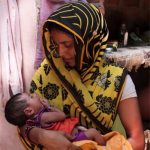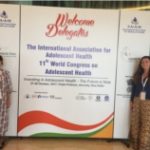Integrating an Alcohol and Violence Screening and Brief Intervention into HIV Post-test Counseling: Observations from a Ugandan Fishing Community on Lake Victoria
It was 11:00 AM on a hot July day. Inside a small green tent in rural fishing village on the banks of Lake Victoria, an HIV counselor was speaking with two local women about a new study to reduce alcohol use and intimate partner violence (IPV). Outside, and intoxicated fisherman staggered around the tent, hollering unintelligible comments toward the women inside. The women looked at each other, smirked, and attempted to dismiss him before continuing with their work. While the irony of the situation was obvious — That the HIV counselor was conducting a study to reduce alcohol use — it also reinforced the importance of the work that team was doing here. I had arrived in Uganda one week earlier to support the implementation of a study that examines the best ways to reduce alcohol us and intimate partner violence in rural fishing villages in Rakai, Uganda. My two months working with researchers and clinicians in this area opened my eyes to many ways that local gender norms can play a direct role in determining women’s health outcomes.
Rates of both alcohol use and IPV are high in these fishing communities. A 2012 study showed that about 52% of women and 62% of men reported getting drunk in the past month.1 From a study in a neighboring fishing village. HIV prevalence was around 37.1% in 2012, compared to the national average of 7.2%.2 Both violence and alcohol have been linked to increased HIV transmission and researchers have established that reductions in alcohol consumption and partner violence also decrease HIV burden.3,4,5
Under the leadership of Dr. Jennifer Wagman, a team of researchers at UC San Diego are collaborating with Rakai Health Sciences Program (RHSP) to test the feasibility and appropriateness of an intervention that reduces harmful/hazardous drinking as well as IPV. Although research has established the connection between alcohol consumption and IPV, this is the first time that a combined alcohol and IPV intervention has been embedded into an HIV testing and counseling setting. RHSP conducts yearly survey visits to these communities where offer HIV testing, counseling, access to ARV treatments, and a small mobile clinic. This study is embedded into the counseling portion of these yearly survey visits, and gives both men and women the opportunity to talk about their experiences with alcohol abuse and relationship violence. While not all participants may be interested in talking about these topics, many show a sense of relief after sharing their experiences and a sense of gratitude for the education provided during the intervention.
Part of my time in Uganda involved observing encounters with the participants and conducting interviews and a focus group discussion with the RHSP HIV counselors. I was able to learn about some of the cultural factors that lead to these hold levels of intimate partner violence, alcohol use, and HIV infection. Fishing is one of the most lucrative careers in the area. Yet with money comes access to two things — alcohol and women. Alcohol is quite affordable – while bottled beer is available in fishing villages, two other forms of alcohol are widely consumed. First, there are 100mL clear plastic bags of alcohol known as buveeras that can be bought for under 30 cents. These contain 40% alcohol by volume are an extremely affordable and accessible way to become intoxicated 6. Another common form of alcohol is the ambiguous homebrewed beverage known as waragi. Its ingredients and alcohol contents can vary widely, making its effects hard to predict. Due to a decrease in Lake Victoria’s fish populations and overfishing fo the small, immature fish, a recent law has placed a lower limit on the weight and length of the fish that can be caught. While this has limited the income in these areas, the alcohol and sex workers are still there and are unlikely to disappear any time soon 8.
There are many effects of alcohol, but a few that are important to us are disinhibition and potential for aggressive behavior. When both men and women consume alcohol, they are more likely to practice risky sex or coerced into unwanted or unsafe sex. Alcohol is also associated with angry and violent behavior in men, which can lead to IPV. This kind of tension and fear within a relationship can also lead to unprotected and nonconsensual sex. With a limited or lacking police presence in these fishing villages, the widespread social acceptability of male dominance in a relationship, and the lack of options for economic independence, women are placed in a very vulnerable position.
In situations of IPV and alcohol abuse, women can suffer from both immediate emotional and physical damage as well as long-term health problems. They can quickly lose control of their health and reproductive decision making, leaving them open to sexually transmitted infections and unwanted pregnancies. Unfortunately, the repercussions of alcohol use and violence can be even more severe in rural Uganda that in countries such as the U.S. While some treatments and tests are available in the region, they are frequently expensive and located far from the fishing villages. Women in the United States might have access to STI testing and treatment as well as psychological counseling. Here, the nearest facility that offers good quality and relatively affordable care is in Masaka — a three hour motorcycle and taxi trip away. Since IPV is relatively acceptable in these communities, victims of violence often feel unable to talk about their experiences or receive any other social support. Other than syphilis and HIV testing provided by the Rakai Health Science Program, most people in this area do not have easy access to testing for other STIs.
In addition to working on the alcohol and IPV intervention, I was able to spend time working directly with local clinicians who provide healthcare to women in this area. These experiences have shown me some of the unique downstream health challenges and risks that can face victims of IPV in these communities. In the case of unwanted pregnancy due to IPV, it is a woman’s responsibility to bring gloves for the clinicians, their own plastic sheets prevent contact with unhygienic delivery beds, and blades to cut the umbilical cord. The delivery itself also comes with extra risks. Umbilical cords are tied with rubber strands torn off gloves. If the baby emerges with the cord wrapped too tightly around its neck, there are rarely sterile clamps available to cut the cord – in these cases, women are forced to choose between having the newborn strangle, or risk transmitting unknown disease from the use of dirty clamps. In the case of postpartum hemorrhage, the hospital relies on medical students to provide blood pressure cuffs. There is rarely blood available in the blood bank, and oxytocin can be locked on the other side of the hospital complex. These are challenges that many of the women in these fishing communities face. However, these risks can be better controlled when a woman is allowed to decide exactly when and how she would like to have sexual relationships with her partner. It is our hope that this screening and brief intervention can facilitate a change in favor women’s rights and domestic safety in these communities. Given that this project has just started, we will wait for this, and future studies, to show just how effective and feasible it can be.
Authored by: Eric Arnold
References:
- Tumwesigye NM1, Atuyambe L, Wanyenze RK, Kibira SP, Li Q, Wabwire-Mangen F, Wagner G. Alcohol consumption and risky sexual behaviour in the fishing communities: evidence from two fish landing sites on Lake Victoria in Uganda. BMC Public Health. 2012 Dec 11;12:1069. doi: 10.1186/1471-2458-12-1069.
- UNAIDS (2012) 2013 Uganda HIV and AIDS Country Progress report. Last accessed on September 7, 2014 from: AIDSinfo: http://www.unaids.org/en/dataanalysis/datatools/aidsinfo/
- Alcohol use before sex and HIV acquisition: a longitudinal study in Rakai, Uganda (Zablotska et al., 2006)
- Alcohol Use, Intimate Partner Violence, Sexual Coercion and HIV among Women Aged 15-24 in Rakai, Uganda (Zablotska et al., 2009)
- “Intimate Partner Violence and Alcohol Fact Sheet” World Report on Violence and Health. World Health Organization
- Iceta, Scovin. “Authorities Ban Sale of Sachet Waragi.” Daily Monitor, 9 Mar. 2017, www.monitor.co.ug/News/National/Authorities-ban-sale-of-sachet-waragi/688334-3843458-e7wcmxz/index.html.
- Smolak, Alex. “A Meta-Analysis and Systemic Review of HIV Risk Behavior among Fishermen.” AIDS Care, vol. 26, no. 3, 2013, pp. 282-291., doi:10.1080/09549121.2013.824541.
- “Bans on Finishing to Save Lake Victoria’s Fish Stocks.” The East African, 13 Mar. 2017, www.theeastafrican.co.ke/news/Bans-fishing-Lake-Victoria-fish-stocks/2558-3847526-10astq/index.html.




